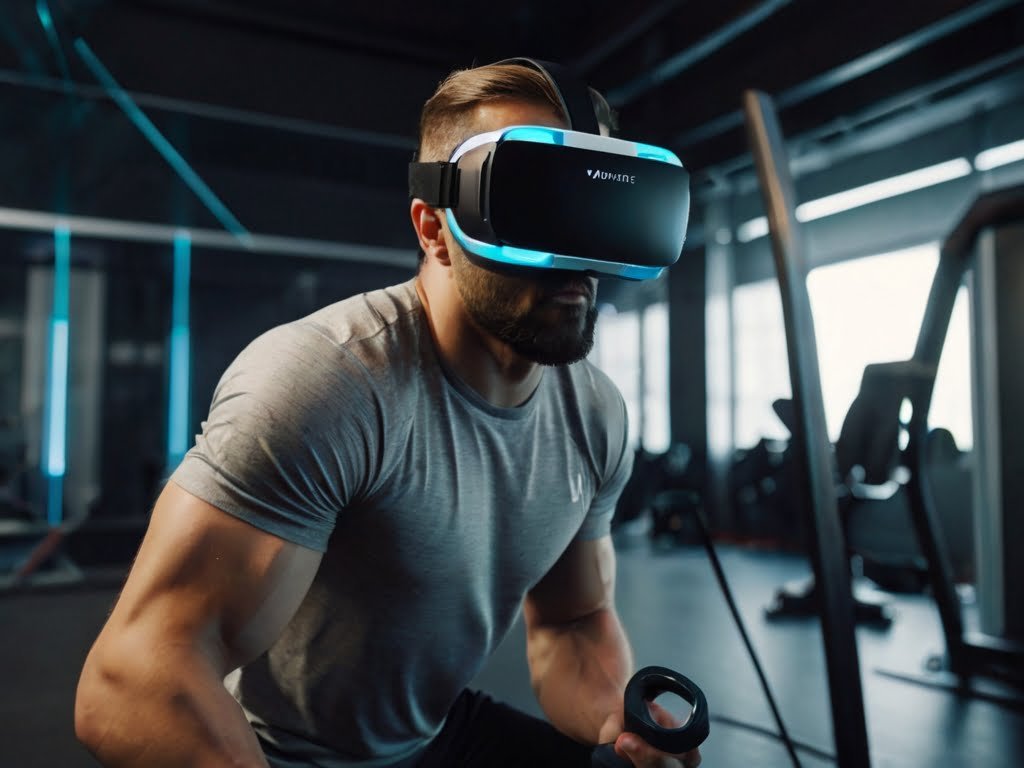From traditional gym setups to home workout equipment, the evolution of fitness technology has continuously pushed the boundaries of what’s possible. In recent years, a groundbreaking development has taken center stage: Virtual Reality (VR). This technology, initially associated with gaming and entertainment, is now revolutionizing the fitness industry by offering an immersive and motivating exercise experience like never before. In this article, we will delve into the exciting world of VR fitness, exploring how it’s changing the way we approach exercise and finding new ways to stay motivated on our fitness journeys.

The Immersive Exercise Experience
Virtual Reality is no longer just a tool for gaming; it has evolved into a medium that can transport us to entirely new environments. When applied to fitness, VR allows users to step out of their living rooms and into breathtaking landscapes, bustling city streets, or even the depths of the ocean – all while breaking a sweat. This level of immersion can make workouts more enjoyable and distract users from the physical exertion, thereby increasing their overall endurance and engagement.
Imagine jogging through a lush forest, cycling along a coastal highway, or attending a virtual yoga class on a serene mountaintop. These experiences not only offer a change of scenery from traditional workouts but also make exercise feel like an adventure. VR fitness turns mundane routines into exciting challenges that keep users coming back for more.
Personalized Workouts and Data Tracking
One of the most promising aspects of VR fitness is its ability to tailor workouts to individual preferences and fitness levels. Fitness apps and platforms often incorporate user data, such as weight, height, and fitness goals, to create personalized exercise routines. VR takes this a step further by adapting workouts in real-time based on the user’s performance. If the user is struggling with a certain exercise, the VR system can modify the intensity or provide alternative movements to ensure a successful workout while preventing injuries.
Moreover, VR fitness applications can track users’ movements and progress, allowing for accurate data collection and analysis. This data-driven approach enables users to monitor their improvements over time, providing a tangible sense of accomplishment and motivation to keep pushing forward. Whether you’re aiming to increase your running speed, improve your flexibility, or build muscle strength, VR can assist you in achieving your fitness goals more effectively.
Gamification of Fitness
One of the most compelling features of VR fitness is its ability to gamify the exercise experience. Gamification involves incorporating elements of game design, such as challenges, rewards, and competition, into non-game contexts – in this case, workouts. By turning workouts into games, VR fitness platforms tap into our innate desire for achievement and progression, making exercise feel less like a chore and more like an exciting adventure.
In VR fitness games, users might need to complete challenges, solve puzzles, or compete against virtual opponents, all while performing physical activities. The competitive aspect can foster a sense of community and camaraderie, even in solitary workout sessions. Additionally, the achievement of in-game rewards, unlocking new levels, or beating personal bests can significantly boost motivation, encouraging users to stick to their exercise routines over the long term.
Overcoming Motivational Barriers
Traditional exercise routines often suffer from a lack of variety and novelty, leading to decreased motivation and adherence over time. VR fitness addresses this issue by constantly offering new and engaging content. With a vast array of virtual environments, workouts, and games, users can easily switch things up whenever they feel the need for change. This constant novelty prevents boredom and plateaus, ensuring that users stay excited about their workouts and committed to their fitness journeys.
Furthermore, VR can help individuals overcome psychological barriers that often hinder progress. For example, fear of judgment in a gym setting can discourage some people from exercising regularly. VR provides a safe and private space for individuals to work on their fitness without the anxiety of being watched. This inclusivity makes fitness accessible to a wider range of people, promoting a healthier lifestyle for all.
Challenges and Considerations
While VR fitness offers numerous benefits, it’s important to acknowledge potential challenges and considerations. Firstly, the initial cost of VR equipment might be a barrier for some individuals. However, as technology advances, prices are likely to decrease, making VR more accessible over time. Additionally, some users might experience motion sickness or discomfort during intense VR workouts. It’s crucial for VR fitness developers to focus on creating experiences that minimize these issues while maximizing the benefits of the technology.
Conclusion
Virtual Reality is ushering in a new era of fitness, one that is immersive, personalized, and incredibly motivating. By combining cutting-edge technology with innovative approaches to exercise, VR fitness platforms are transforming the way we stay active and healthy. Whether you’re an experienced athlete or just starting your fitness journey, the world of VR fitness offers a universe of possibilities to explore. As the technology continues to evolve, we can look forward to a future where exercise is not only a physical endeavor but a thrilling adventure for the mind and body. So, put on your VR headset and step into the world of futuristic fitness – your next workout is waiting!
